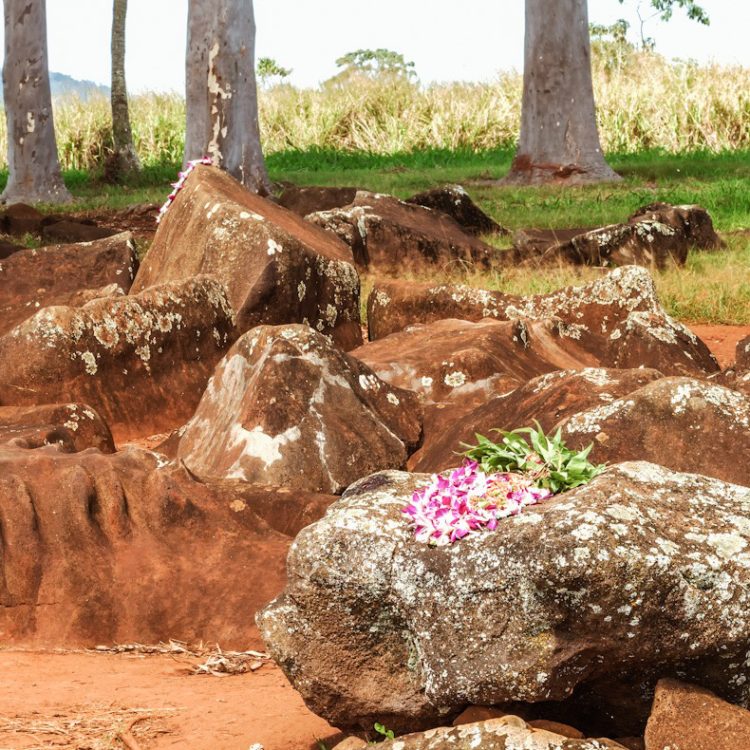They may not be as popular as Waikiki or Diamond Head, but they are just as important (dare we say even more important) to perpetuating Native Hawaiian history, as well as Oahu’s culture and sense of place. This month on the blog we’re talking about 3 sacred ancient Hawaiian sites on Oahu. These sites include heiau (places of worship), fishponds, and pohaku (stones).
- The largest temple on Oahu, Pu’u O Mahuka Heiau, sits on nearly two acres overlooking Waimea Valley. This heiau was said to have been built in the 1770s, a time of political disorder. The temple was more than likely built as a sacrificial temple, specifically for successes in war. It was designated a National Historic Landmark in 1962, when it became the center of a Hawaii State park.
- Located on slopes of Kahana Valley overlooking the bay is the Kapaele’ele Koa fishing shrine. From this vantage point along the western side of the valley, fisherman could spot the schools of fish in the bay and signal fishermen in the water to surround them. Offerings were given at their sacred shrine to assure a bountiful catch.
- The Kukaniloko Birthstones is the first historic site on the island to be officially preserved and protected by the state. From as early as 1100 to the 1700’s, the daughters of Hawaii bearing children who would later become chiefs traveled to Kukaniloko to give birth. The location of the pohaku holds much significance as it sits in the spiritual piko (navel) or center of the island. Giving birth at this sacred site was a way to ensure a child’s high-ranking status. According to S.M. Kamakau, a 17th century historian, “if a chiefess entered and leaned against Kukaniloko and rested on the supports to hold up the thighs in observance of the Liloe kapu [prescribed regulations for birthing], the child born in the presence of chiefs was called an alii, an akua, a wela—a chief, a god, a blaze of heat.” Today visitors are able to see the original stones scattered under a grove of trees.
We look forward to spotlighting a few more sacred historic sites as the year goes by, and we hope that you enjoy learning about them as much as we do. Our goal is to help perpetuate this place we love so dearly, as well as its rich and loving culture.

